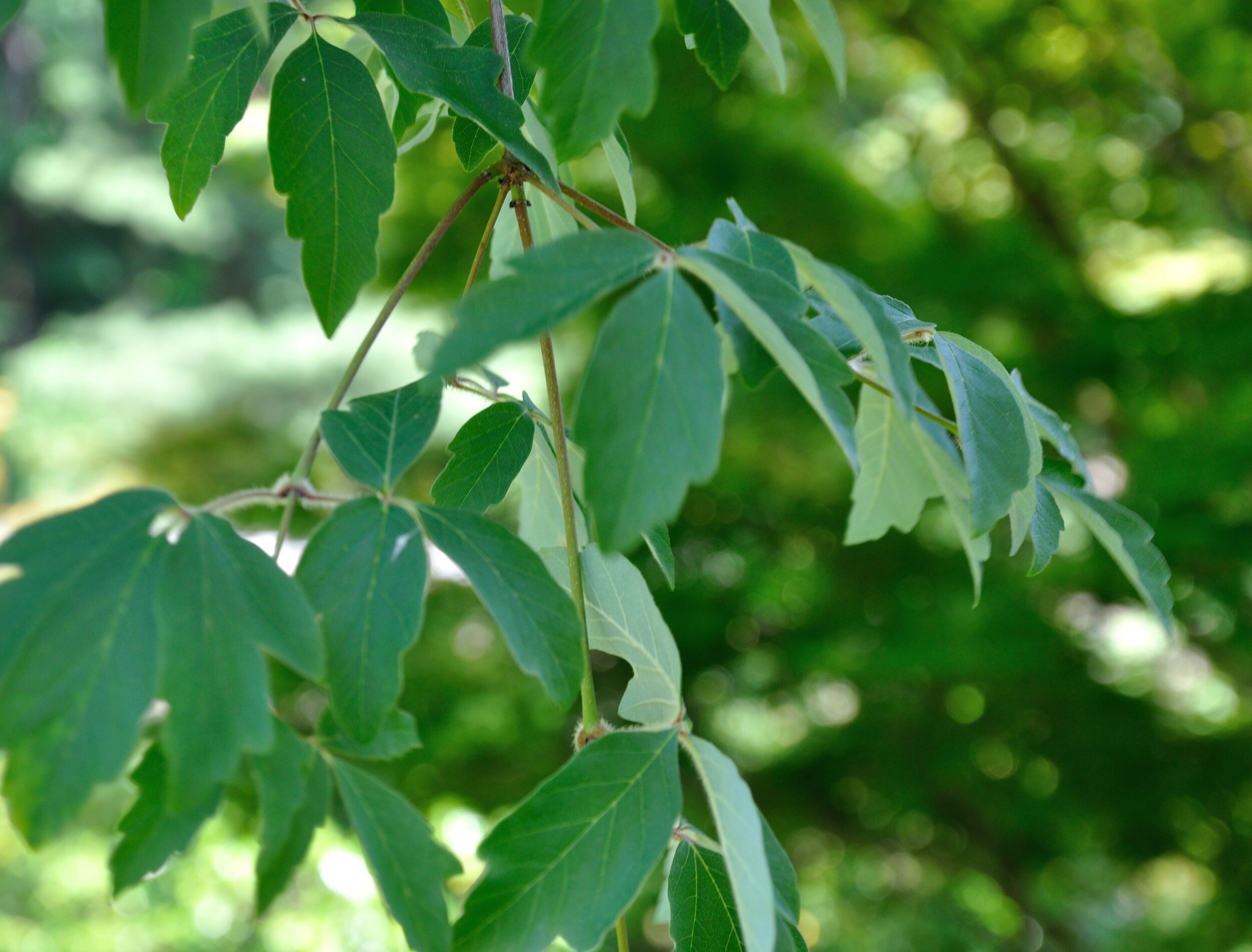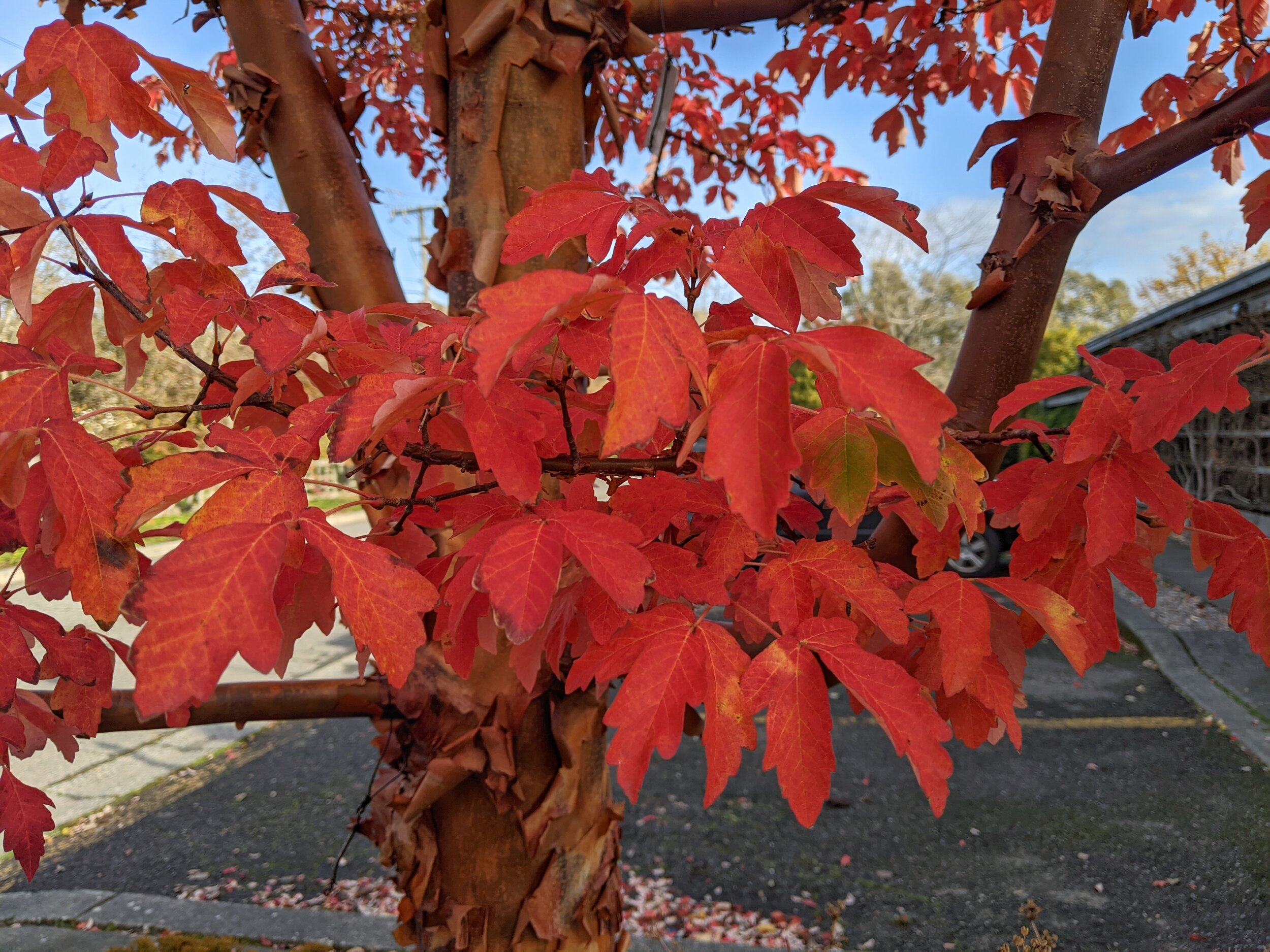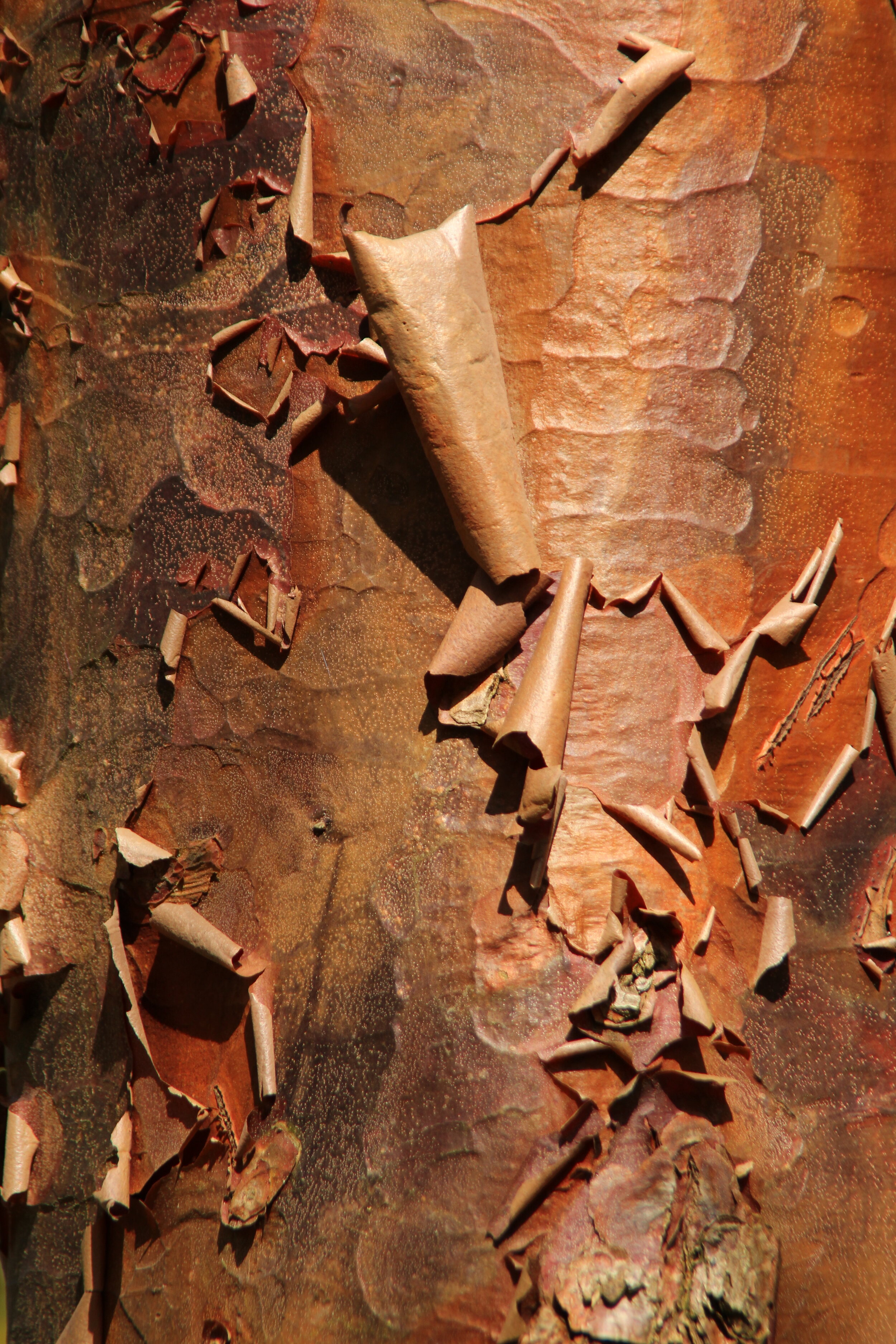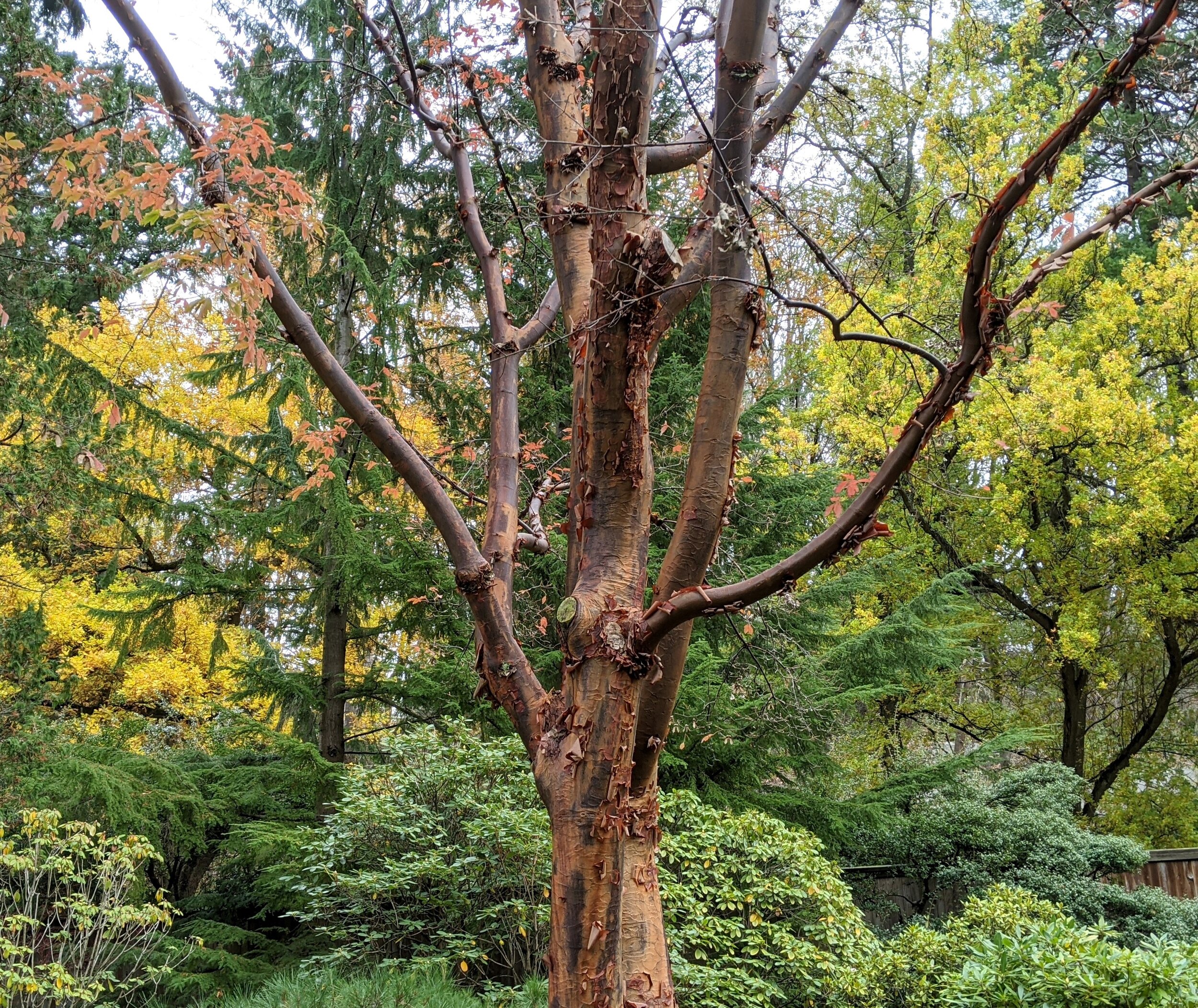Paperbark Maple is a Glowing Beacon in the Winter Garden
By Corinne Kennedy
Acer griseum in Seattle Japanese Garden, north of the entrance gate. (photo: Corinne Kennedy)
In these dark, wet days of winter, I’m always on the lookout for trees with interesting bark—and the beauty that they bring to this muted season. One of the most striking is Acer griseum, paperbark maple, with bark that peels to reveal a lovely patchwork of texture and color. We are fortunate that the Seattle Japanese Garden contains a large, attractive specimen, located not far from the entrance gate. According to Washington Park Arboretum records, it was planted in November 1964 as a young tree, about six feet tall, and most likely had been grown in the Arboretum nursery from plant material acquired in the mid-1950s.
Paperbark maple is endemic to mixed forests in central China at elevations of about 5000-6500 feet. Brought to the West in the late 19th century—and much earlier to Japan— it is now a popular ornamental in temperate regions throughout the world. Originally considered a variety of Acer nikoense, it was renamed A. griseum in 1902. Unfortunately, wild populations are fragmented and declining, and this unique maple species is now listed as “Endangered” in the wild.
Acer griseum is a slow growing deciduous tree with slender upright branching. In our region, it matures to about 30 feet tall by 25 feet wide, with a densely foliaged, oval to oval-rounded habit. (With time, it will exceed that height, as has our Garden’s 60-year-old specimen, now about 45 feet tall.) Remarkably adaptable, it is reliably cold hardy to USDA Zone 5 (minimum temperature -30 to -20 degrees Fahrenheit), and has no serious pest or disease problems. Though it prefers moist, well-drained soil in full sun to part shade, it performs well in deeper shade and in clay or compacted soils, providing drainage is adequate. In the Pacific Northwest, established trees are considered drought tolerant, needing only occasional watering during our dry summers.
Paperbark maple foliage, in summer and fall. (photos: left, in the Seattle Japanese Garden, by Tony Monk; right, at the Center for Urban Horticulture, by Corinne Kennedy)
Leaves are trifoliate (consisting of three leaflets), three to five inches long, coarsely toothed, and held alternately on the stems. Bronzy when young, they mature to dark bluish-green above and silvery gray-green, with fine hairs, beneath. (The species name, griseum, means grayish, and refers to the leaves’ pale undersides). Fall color develops later than other maples, persisting over a long season. In full sun, it varies from a brilliant orange-red to a duller reddish-green or bronze. Trees growing in shade often display more subtle but still lovely colors, in tints of apricot and yellow.
Even more striking is paperbark maple’s unusual peeling bark, prominently displayed in winter. The rich brown or reddish-brown outer bark peels into large papery curls that remain on the tree, contrasting with the smooth, often shiny, cinnamon-brown inner bark. Exfoliation develops early, often on second-year wood; young trees with the most attractive bark will retain that excellence as they age.
The attractive peeling bark of Acer griseum, located in Area C of the Seattle Japanese Garden. (photos: left, by Mary Ann Cahill; right, by Corinne Kennedy)
Small, insignificant, greenish-yellow flowers open as the leaves emerge. They develop into wind-dispersed samaras—dry, one-seeded fruits with papery wings, affectionately called helicopters or whirlybirds. The samaras of A. griseum are downy and pale brown, their wings spreading at an angle of 60 to 90 degrees.
Unfortunately, propagation is difficult, both vegetatively and from seed. Paperbark maples produce many hollow/seedless fruits, only about 5% of the seed produced is viable, and germination of viable seed is slow. (Even when propagators use seed treatments, germination often takes two or three years.) Hence trees have tended to be expensive—and in short supply. As late as 1986, local plantsman and plant explorer Daniel Hinkley referred to Acer griseum as “uncommon.” Yet by 1989 he noted that trees were becoming more widely available. Currently, researchers are looking at the limited number of introductions from wild populations that have thus far been made, and studying whether the genetic diversity of trees in cultivation accurately reflects that of those populations. If increased diversity is needed, new introductions will be made from wild-collected seed.
This beautiful maple is attractive in all seasons and a star of the winter garden. Fortunately, it is no longer uncommon in Seattle. I see it thriving in front gardens, along streets and in parks throughout West Seattle, where I live. Even the street trees, confined to narrow parking strips, usually appear healthy. A small tree with an upright habit, Acer griseum is an excellent choice for the home garden and for bonsai. Be sure to plant it as a garden focal point, visible from inside your home as well as from within the garden—and if possible, backlit by the setting sun!
Corinne Kennedy is a Garden Guide, frequent contributor to the Seattle Japanese Garden blog, and retired garden designer.





